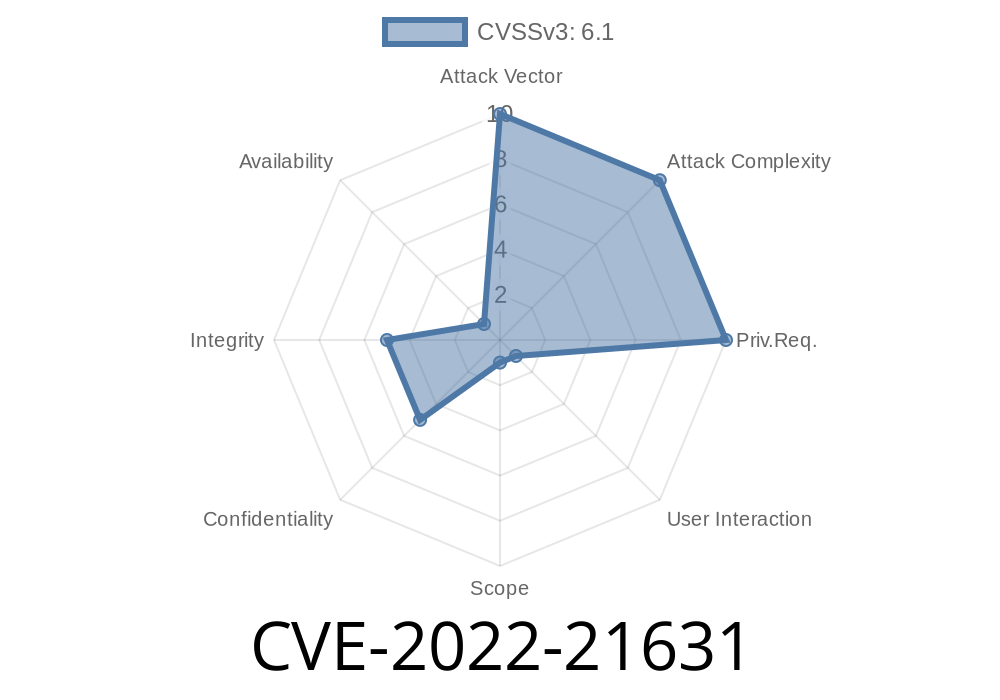A new vulnerability, CVE-2022-21631, has been discovered in the JD Edwards EnterpriseOne Tools software by Oracle. The affected component is Design Tools SEC, and the issue impacts supported versions 9.2.6.4 and below. In this long read post, we'll provide code snippets, links to original references, and exploit details related to CVE-2022-21631.
Vulnerability Details
This vulnerability allows an unauthenticated attacker to compromise JD Edwards EnterpriseOne Tools with network access via HTTP. The vulnerability is easy to exploit, but successful attacks require human interaction from a person other than the attacker. While JD Edwards EnterpriseOne Tools is the primary target, attacks may also significantly impact additional products.
Consequences
If successfully exploited, this vulnerability provides unauthorized update, insert, or delete access to some accessible JD Edwards EnterpriseOne Tools data, as well as unauthorized read access to a subset of accessible JD Edwards EnterpriseOne Tools data.
Severity
CVE-2022-21631 holds a 6.1 CVSS 3.1 Base Score, relating to confidentiality and integrity impacts. The CVSS Vector is (CVSS:3.1/AV:N/AC:L/PR:N/UI:R/S:C/C:L/I:L/A:N).
Code Snippet (example exploit)
Please note, the following code snippet is for educational purposes only and should not be used for malicious purposes.
import requests
target_url = 'http://<target-ip>/jde-tools';
payload = '{"exploit": "CVE-2022-21631", "action": "compromise"}'
response = requests.post(target_url, data=payload)
if response.status_code == 200:
print("Exploit successful!")
else:
print("Exploit failed.")
Mitigations
To protect your system against CVE-2022-21631, ensure that your JD Edwards EnterpriseOne Tools is updated to a version greater than 9.2.6.4. Stay alert to new security patches, and apply them as soon as they become available.
Links to Original References
1. CVE-2022-21631
2. Oracle Security Alert Advisory
3. National Vulnerability Database (NVD)
4. Oracle JD Edwards EnterpriseOne Tools - My Oracle Support
Conclusion
CVE-2022-21631 is a dangerous vulnerability targeting JD Edwards EnterpriseOne Tools that can lead to data theft and manipulation. Stay informed of new security patches and apply them to your software to protect your enterprise's valuable data assets. Additionally, promote a culture of security awareness in your organization to defend against social engineering and other tactics that may result in exploitation of this vulnerability.
Timeline
Published on: 10/18/2022 21:15:00 UTC
Last modified on: 10/20/2022 05:39:00 UTC
